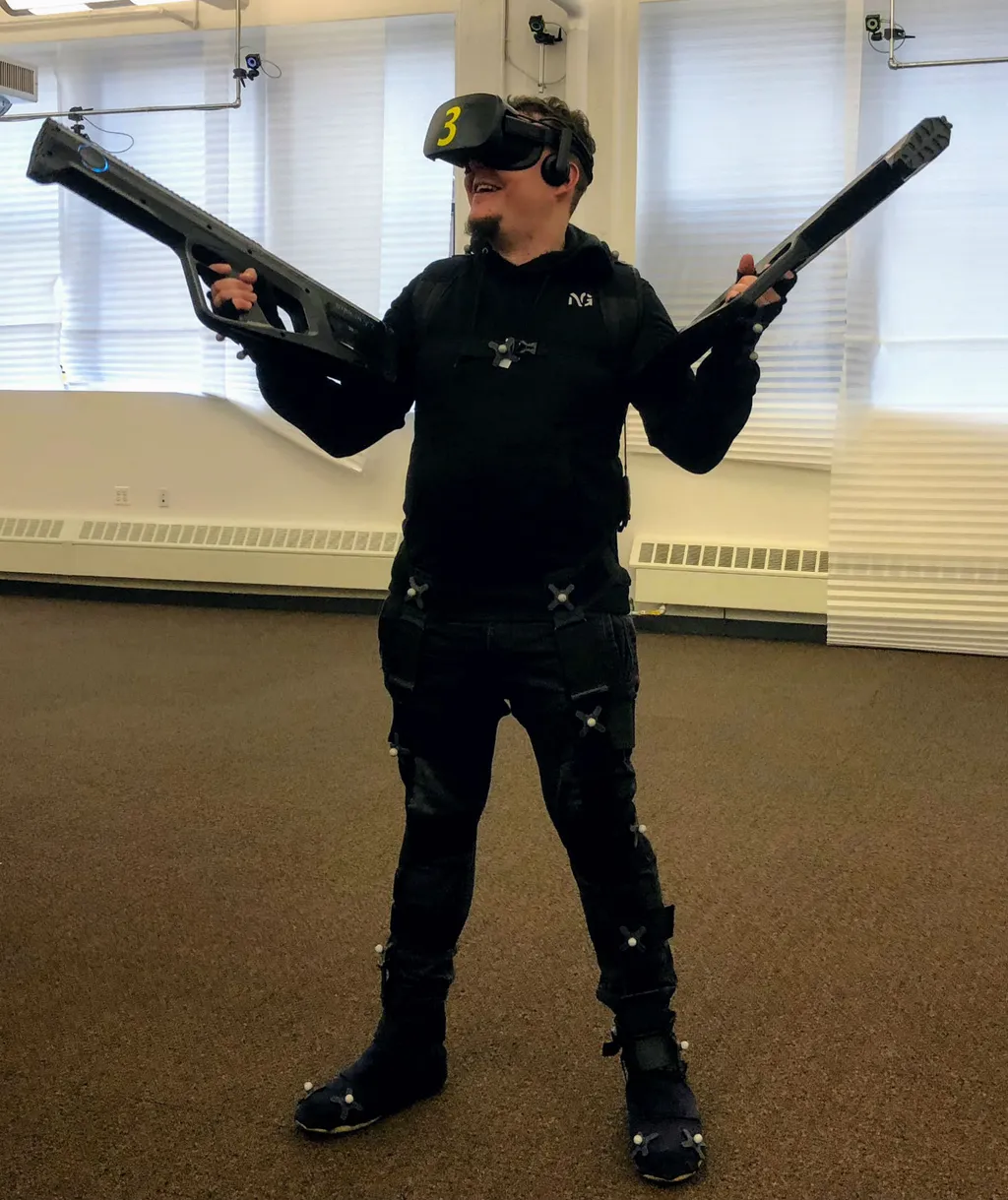I was recently invited to New York to check out the demo VR space for Neurogaming. The company behind World of Tanks (Wargaming) formed Neurogaming to work on VR arcades in partnership with a venture funding group called VRTech. From a hardware perspective, their first “CinemaVR” system is not too dissimilar from IMAX VR’s locations. You can stand in place and move around a few feet but you’re still tethered to a computer and not able to walk too far. Overall, I was impressed by the quality of the competitive games they’ve built for it.
The company also demoed a next-generation system unlike anything I’ve experienced before. They call it Polygon and it seemed like a military training simulation. Before I go much further, I should say that I feel uncomfortable thinking back on my time in Polygon for a number of reasons. There’s of course the recent mass shooting in Florida, and all the others before it, as well as the continual debate over gun control. There’s my concern over how some people might use a training tool as high quality as Polygon. And also, there’s the lasting feeling of empowerment I felt holding a hefty rifle tight to my shoulder and moving quickly, muzzle up, through an area as I cleared it with my team.
Neurogaming’s work-in-progress system uses backpack computers with Oculus Rifts and OptiTrack cameras overhead, and they attached leg, foot, hand and arm trackers for full-body immersion. Getting outfitted with the trackers wasn’t quick and the system needed to be restarted a few times. I also swapped out several of the Striker programmable prototype guns they were using because they stopped working. Nonetheless, over the course of my visit to their virtual world I experienced a number of firsts.
For instance, there was one other person in the same real space with me walking around in New York while another was in Moscow in another prototype Polygon arcade. At one point we all put our hands together and I wasn’t sure which hand I’d actually collide with in the real world. The trans-atlantic multiplayer was practically flawless, at least to my senses. At one point the player in Moscow stood at the back of our evac aircraft, the door still open as the ground started to move away. He acted like he was losing balance and swung his arms in circles trying to stay inside the plane, and I recall being absolutely blown away by the quality of the full-body tracking and its perfect translation so far around the globe.
Neurogaming also built a sophisticated system that not only warns a visitor in VR about potential collisions with walls, but also shows ghostly images to display other people who share the same physical space, but might be shown represented in the virtual space somewhere else.
There are a number of VR startups working on backpack-powered full body multiplayer immersive experiences that could be enhanced by environmental effects. Both Dreamscape Immersive and The VOID do this incredibly well. Neurogaming’s Polygon system, as I saw it in New York, didn’t have environmental effects yet, but representatives said at their current stage of development the system is more about testing their broadcasting system and trans-atlantic multiplayer.
“PolygonVR can be used for various spheres like entertainment, sports and may be used as an industrial training solution for law enforcement or heavy machinery or for industrial safety training,” wrote Neurogaming Chief Marketing Officer Alex Morozov in an email. “The key focus for us now is to develop an entertainment and media platform.”

And wow, in its best moments that broadcasting system captures both the high-quality nature of the visuals and the body tracking. Here’s a raw video (minus sound) offering some sense of what the system is like:
Overall, Neurogaming appears to be at the cutting edge of VR experience design. They have licenses for a number of popular Russian cartoons so they can develop kid-friendly experiences, and at the other end of the spectrum the group even has industrial experiences they are developing for job training. Here’s a trailer showing one of them:
The Polygon part of Neurogaming’s efforts still appears to be very early in development, but there are a number of questions I put in front of the company asking about its intended use.
“We’re in the process of selecting content partner(s). Currently the product we’ve demonststed is merely a prototype showcasing the capabilities of the solution. Based on the partner we will end up with, the content may be less realistic and more cartooney,” Morozov wrote.
I also asked if there was a limit to how realistic they want to get with Polygon in terms of blood and realistic deaths.
“This depends primarily on the content partner that we’ll end up with (we’re talking AAA gaming/movie titles here),” Morozov wrote. “And as you know there are, say, Battlefield and, say, Overwatch. These games are quite different in terms of style, realism and depiction of violence.”


























